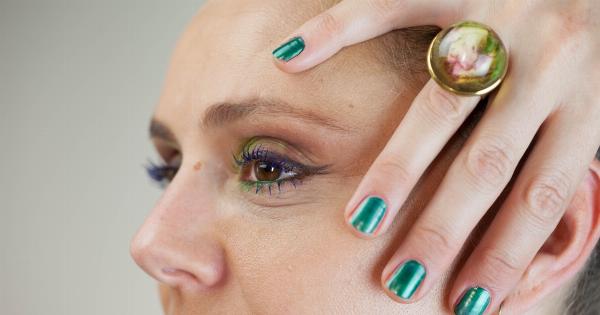Barley, also known as a stye, is a small, painful bump that forms on the eyelid. It occurs when a gland in the eyelid becomes clogged or infected.
While styes can be uncomfortable and unsightly, they are generally harmless and will often resolve on their own within a few days or weeks. Understanding what causes styes can help you take steps to prevent them from occurring in the future.
1. Blockage of Oil Glands
One of the most common causes of styes is a blockage of the oil glands in the eyelid. These glands, known as the meibomian glands, produce oil that helps keep the eye lubricated and prevents tears from evaporating too quickly.
When they become blocked, the oil builds up in the gland and can form a bump on the eyelid.
2. Bacterial Infections
In some cases, styes can be caused by bacterial infections. Certain types of bacteria, such as Staphylococcus aureus, can infect the hair follicles of the eyelid, leading to the formation of a stye.
Poor hygiene, such as failing to wash your hands before touching your eyes, can increase the risk of developing a bacterial infection.
3. Blepharitis
Blepharitis is a condition that causes inflammation of the eyelids. It can be caused by a variety of factors, including bacterial infections, allergies, and skin conditions.
When the eyelids become inflamed, the oil glands may become blocked, leading to the formation of a stye.
4. Hormonal Changes
Hormonal changes can also increase the risk of developing styes. Women, in particular, are more likely to develop styes during menstruation.
This is because hormonal changes during the menstrual cycle can affect the oil production in the eyelids, making them more prone to blockages and infections.
5. Stress
Stress can weaken the immune system and make it more difficult for the body to fight off infections. This can increase the risk of developing styes, especially if you are already prone to them.
If you are under a lot of stress, it is important to take steps to manage it, such as practicing relaxation techniques or getting more rest.
6. Use of Cosmetics
Using cosmetics, such as eyeliner or mascara, can increase the risk of developing styes. This is because cosmetics can clog the oil glands in the eyelids, leading to blockages and infections.
It is important to remove your makeup before going to bed and to avoid sharing makeup with others.
7. Contact Lenses
Wearing contact lenses can also increase the risk of developing styes. This is because contact lenses can irritate the eye and make it more susceptible to infections.
If you wear contact lenses, it is important to follow proper hygiene practices, such as washing your hands before touching your eyes and storing your lenses in a clean case.
8. Poor Nutrition
Poor nutrition can weaken the immune system and make it more difficult for the body to fight off infections. Eating a diet that is high in sugar, fat, and processed foods can increase the risk of developing styes.
It is important to eat a well-balanced diet that is rich in fruits, vegetables, whole grains, and lean proteins.
9. Eye Trauma
Eye trauma, such as a scratch or a blow to the eye, can increase the risk of developing styes. This is because trauma can damage the oil glands in the eyelids or introduce bacteria into the eye.
If you have experienced eye trauma, it is important to seek medical attention to prevent complications.
10. Genetics
Some people may be more prone to developing styes due to genetic factors. If you have a family history of styes or other eye conditions, you may be more likely to develop them yourself.
Conclusion
While styes can be uncomfortable and unsightly, they are generally harmless and will often resolve on their own within a few days or weeks. Understanding what causes styes can help you take steps to prevent them from occurring in the future.
Practicing good hygiene, avoiding irritants like contact lenses and cosmetics, and eating a well-balanced diet can all help reduce the risk of developing styes.





























